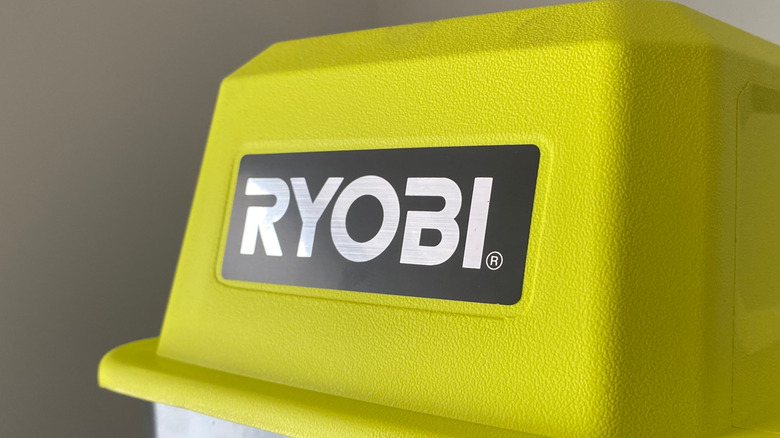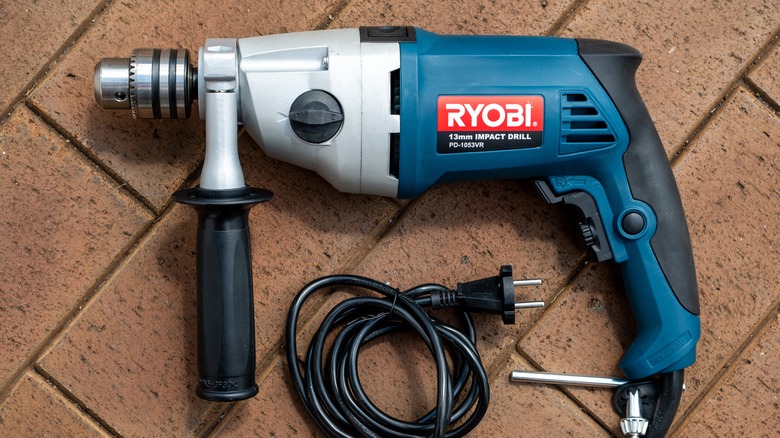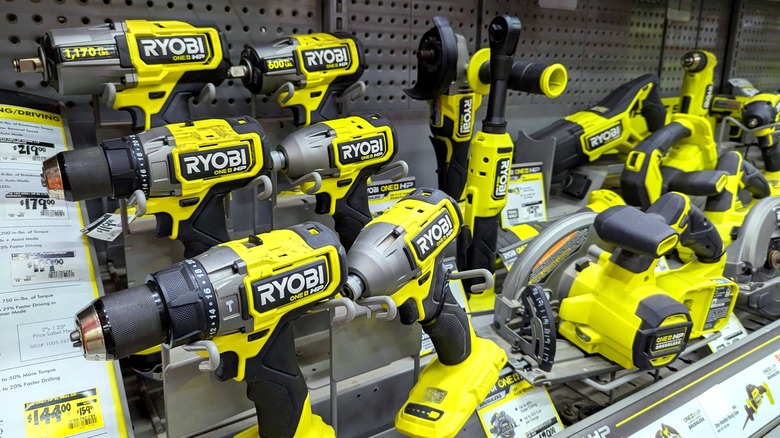Why Did Ryobi Switch From Blue To Green? Here Are The Best Theories
As is the case in any industry, over time, in the power tool world, change is inevitable. For example, looking at Ryobi's catalog, it has transferred over to predominantly battery-powered tools — though there are still some corded Ryobi tools that are worth the connection hassle. On a more aesthetic level, it has changed significantly throughout the years as well. Many might remember that not long ago, Ryobi tools were not their current distinctive yellow-green shade, instead sporting a blue hue — a change that has brought on much discussion in tool circles.
Ryobi's color change has made the rounds online for multiple reasons. First are the debates regarding when exactly the change took effect, with most agreeing the blue was phased out for green in the late 2000s into the early years of the 2010s. Meanwhile, others have discussed what exactly caused this change to occur in the first place. At the time of publication, Ryobi hasn't released an official statement explaining the rationale behind the change. Folks online have been left to speculate, resulting in the creation of some popular fan theories. Some of these explanations actually seem quite plausible.
Some think Ryobi's battery switch prompted the color change
One of the biggest and most credible prevailing theories regarding Ryobi's color change connects to another major alteration. In the 2000s, Ryobi batteries for cordless tools were being changed from the nickel-cadmium variety of old to the emerging lithium-ion type. While this battery type comes with its problems and disadvantages, in terms of power and longevity, they were a clear improvement over their predecessors, hence why they're the power tool standard today. Therefore, many posit that their widespread implementation marked the dawn of a new era for the company, so Ryobi took it as an opportunity to try out a new look.
This idea is present all over the Internet, including a thread on the Bob Is The Oil Guy forum, with commenters citing blue tools as specifically the nickel-cadmium era and green as the lithium-ion. One user on Reddit shared their perspective as a Ryobi employee who was with the company from 2004 to 2013. "The green was introduced with the Li-ion battery products in 2007. We continued to produce both Blue NiCad and Green Li-ion alongside each other while Li-ion versions of each tool were designed and released."
While the battery upgrade offers a practical explanation, others believe the change was more about branding and visibility. After all, there are few more eye-catching colors than bright green.
Could the color swap have been done to stand out?
Looking at the power tool marketplace, there are a lot of colors going on. Bauer and Milwaukee have opted for red and black, while Kobalt and Makita have stuck with different shades of blue. Some wonder if Ryobi, previously being blue, found it difficult to stand out. "Bright green is going to catch your eye and gives a higher chance it'll be the tool you grab. It's why there's Ryobi Green, DeWalt Yellow, and Milwaukee Red," wrote one Redditor, suggesting the green change was a deliberate marketing move. Another Redditor expanded on this idea a bit, suggesting that Ryobi intended the yellow-green hue to become synonymous with the brand.
Also, on a sizeable jobsite with lots of things going on at any given time, or a cluttered home workshop, darker hues could get lost in the chaos. The bright green of a Ryobi tool ensures it's visible at all times, so it's easy to find when you need it. As one Redditor commented, "I've never lost a Ryobi power tool and I probably never will." Ryobi is still putting out new tools in 2025, which are, of course, in its now-recognizable green shade. Perhaps someday we'll get a concrete reason for the change, but until then, all we can do is speculate.


